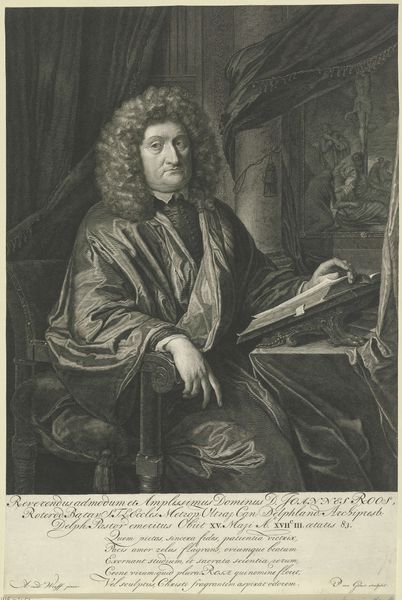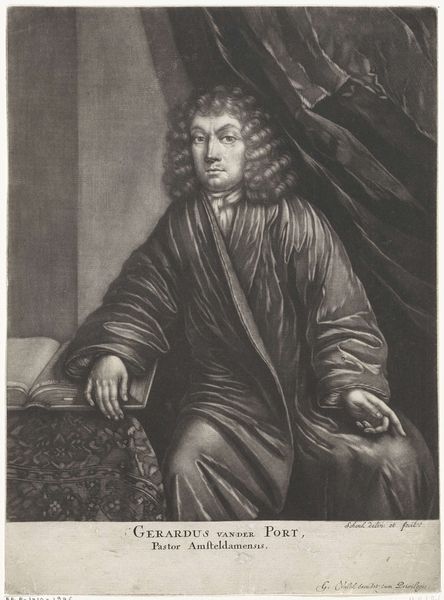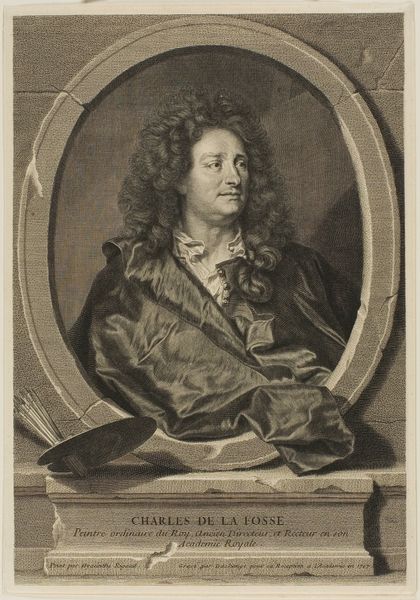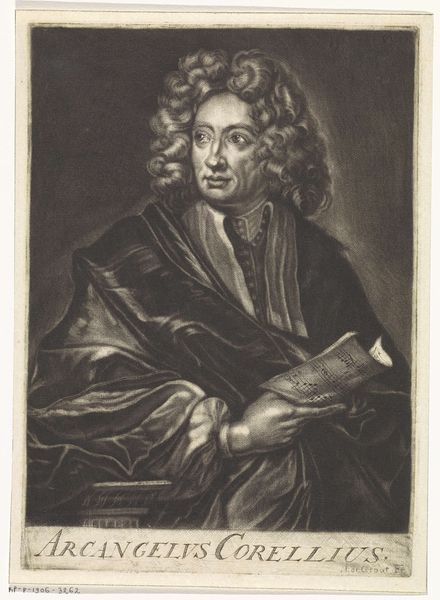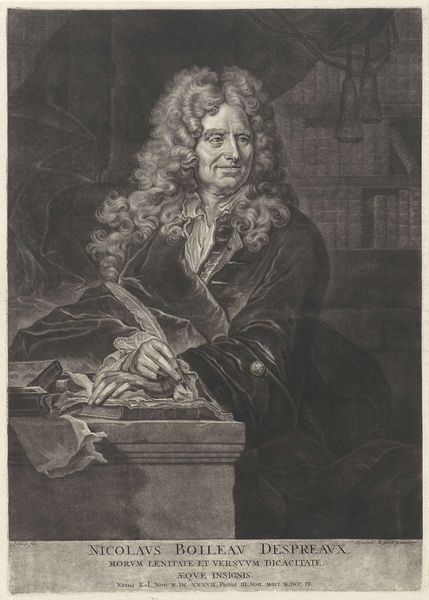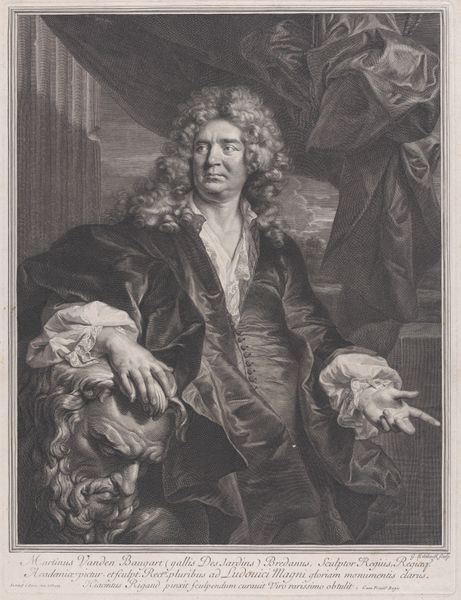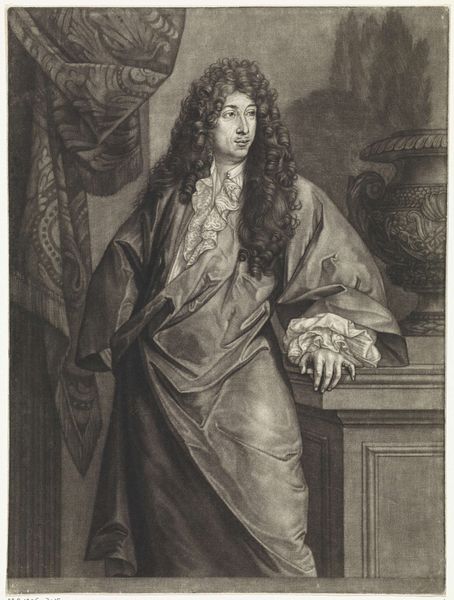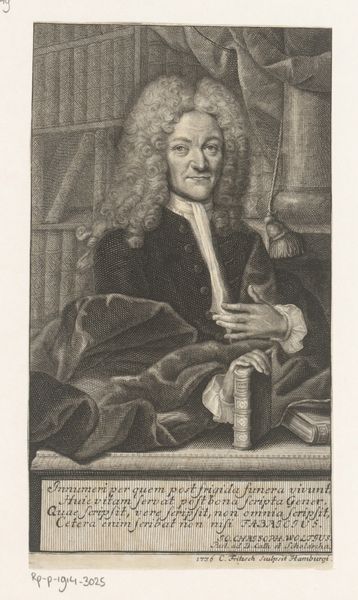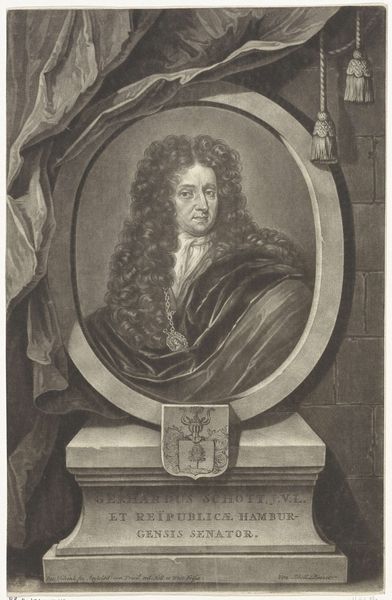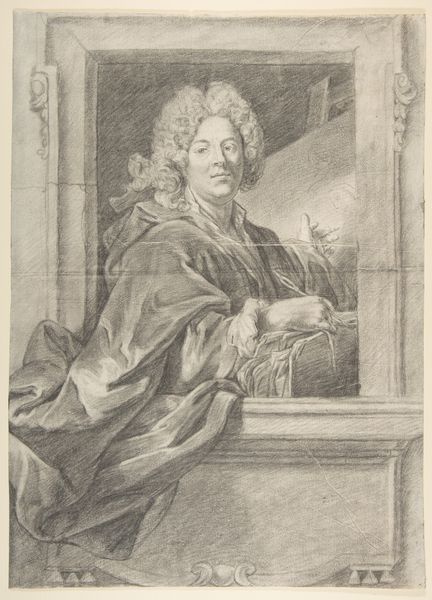
drawing, ink, pen
#
portrait
#
drawing
#
baroque
#
caricature
#
ink
#
pen
#
history-painting
Dimensions: height 380 mm, width 305 mm
Copyright: Rijks Museum: Open Domain
Editor: This is a portrait of Johannes Roos, created anonymously around 1707, using pen and ink. There’s almost a caricatured feel to it, but I'm intrigued by the setting and his attire. What do you see in this piece? Curator: Well, considering the socio-political climate of the Dutch Golden Age, this portrait offers a compelling look at the performance of power and identity. The opulent wig, the voluminous robe, the carefully constructed setting with what looks to be a crucifixion scene--these are all signifiers. Who was Roos, and what position did he hold within society? His portrayal certainly speaks to the visual language of authority in that period. Editor: I believe the sitter was a professor from Amsterdam. He looks very sure of himself in the painting. Curator: Exactly! Now consider how such a portrait reinforces existing hierarchies. The setting acts as a backdrop that showcases social status and perhaps even religious leaning. Do you notice the interplay between the almost exaggerated realism of Roos's face and the idealized, almost theatrical drapery and backdrop? Editor: I do now that you point it out. It’s almost like he is deliberately positioned against a historical, cultural, and religious context to emphasize something specific about his own standing. Curator: Precisely. And the seemingly simple choice of materials – pen and ink – speaks volumes. Was this a quickly produced sketch, or a carefully considered study meant for wider distribution, thereby influencing public perception? These visual strategies normalize the power structure by carefully curating self-presentation, and can influence our own understanding of the subject, even centuries later. Editor: It’s interesting to consider how a single image can reflect and reinforce social and power dynamics so strongly. I learned a lot about the context of the painting. Curator: Absolutely, it is the layering of these considerations that really allows us to reflect upon what is at stake when an artist—anonymous or otherwise—chooses to depict a person and in doing so chooses to position them within history.
Comments
No comments
Be the first to comment and join the conversation on the ultimate creative platform.
